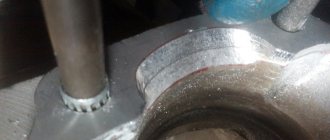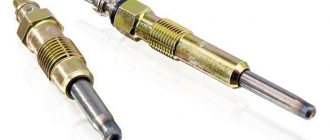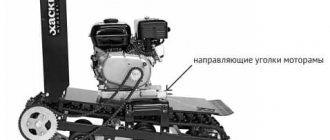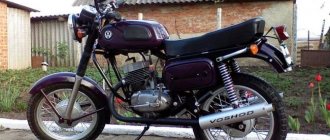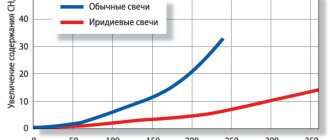Honda Spacy 125 review
If we talk about a test drive of a new scooter model from Honda with the designation SPACY 125, then we can safely say that this two-wheeled “stallion” behaves excellently on the road without any complaints. Hidden inside is a four-stroke engine with a displacement of 125 cubic meters.
If we talk about the dimensions of the model itself, then while driving you feel like you are driving a real midi-business class. Judging by its handling, the SPACY 125 has much in common with the Honda Tact. In the lowest gears, the scooter’s traction can only be compared to that of a steam locomotive, as it impresses everyone. After a speed of 60 km/h, a powerful pickup begins to be felt, which will end only after the needle of your speedometer reaches 90. If we talk about the maximum speed, the scooter’s speed is limited to 105 – 110 km/h. Throughout the entire operating range of the engine, the traction is smooth, which makes it possible to make dynamic overtaking on the highway at speeds of more than 80 km/h, but do not get too carried away with the speed, remember about your safety.
If you drive around the city at low speeds, then the prevailing feeling is that this is not a gasoline scooter, but, most likely, a liter diesel engine. Brakes are at an acceptable level. The front disc brake is mounted on a disc caliper. In combination with excellent tires, the brakes work just perfectly. The rear drum brake provides adequate braking for the scooter, which weighs a little more than one hundredweight.
The front fork has a lever structure. This situation has the following consequences:
· this slightly worsens handling on steep turns; · the design provides a greater margin of safety and reliability.
The travel of such a suspension is also suitable for domestic roads. When driving alone, no problems arise, but if you take a passenger, there is a slight sagging, so in this case you should be more careful on the road while driving.
If you want to find the most comfortable scooter to ride, then the SPACY 125 is ideal for you. All controls are unified with other models - this is the signature style of the Japanese manufacturer, which many praise. A distinctive feature is the powerful headlight, which in its characteristics is comparable to a regular motorcycle headlight. If you have the desire and time, you can easily install a second headlight on the “head” of the scooter.
Thanks to its mass, the scooter perfectly maintains stability both at 60 km/h and at 100 km/h. The maximum you can squeeze out of this two-wheeled friend is no more than 115 km/h.
This model should be recommended for those:
· who makes long journeys; · who is preparing for an active holiday.
In a modern city, this scooter is less agile than its colleagues in the shop. Thanks to its 11 horsepower, you will be able to feel all the speed. If we talk about serious shortcomings, then you will not be able to pass off this scooter as a 50 cc moped, which will leave a certain imprint on its further registration in these government agencies. The gas tank volume is 6.5 liters.
What are the advantages of the modern HONDA JF28 CVT engine?
I have been the owner of a Honda PCX 125 for a long time, now, at the opening of the 2022 season, preparing all my equipment for the season, I got to PCX and decided to change the oil and brake fluid, the sofa was bought new, there was a manual with it, but there was just one problem , the scooter was intended for the Thai market, respectively, the manual and all the papers are in Thai, a language absolutely incomprehensible to me. I was too lazy to take a translator and translate it manually, and I didn’t have time, so I went online to search for a manual in Russian and came across a VKontakte group dedicated to this particular model of Honda scooters. While reading several discussions, I came across a very interesting topic, it was called: “What are the advantages of the modern Honda JF28 CVT engine?” - This is the engine installed on my PC, and I became quite interested in what 147 thousand rubles were paid for 2011 when purchasing this unit, and moreover, why is a Honda dealer asking 200 thousand rubles in 2022 for the same scooter, which was given 25 cubic meters more in volume? I started to look into it, read all the points related to the technical equipment of the scooter, and was very surprised. I would never have thought that a 125 cc sofa moped could contain so much innovation and smart solutions from Honda engineers. In general, when purchasing, I thought for a very long time and decided what to buy, the Italian Honda SH150i moped, or the 125 cc PCX, I initially wanted an SH, but I was not satisfied with the price, for which the dealers could not say anything. But the PCX was a new product at that time, it, like the SH, had PGM-FI injection, but that’s where the similarities ended and the differences began, even then the PCX was positioned as a very innovative, economical and technologically advanced scooter for the city, which is not convenient only for the driver but also for the second number. It bundled together a sea of electronics, including the “Stop & Go” system, and a sea of everything, the existence and operating principle of which I still don’t know about. The brakes, or rather the proprietary Honda CombiBrake (CBS) system, were also captivating. Also, the moped had and still has a bunch of different solutions and technologies, the operating principle of which is very interesting to me now. What I also noticed at that time was the eSP inscription on the air filter of the scooter, but at that time I did not pay attention to it, well, the inscription and the inscription, what to take from it, another bells and whistles, I thought at that time, but now , plunging head over heels into PCX, I finally found out what it is. eSP-Enhanced Smart Power, translated as “Increased Smart Power”, this definition does not have a completely literal meaning, eSP engines are small-cubic capacity units that produce very surprising power for their size, but the power itself is achieved not only, for example, by cubic capacity, but also electronics that use this power wisely. The engines also stand out for their amazing efficiency, environmental friendliness, fairly small size, and extremely successful layout. The fact is that the main feature of such engines is precisely the layout, it is very successful, for example, on such engines there is no starter that is familiar to our eyes, where the generator plays the role of a starter, I will talk about this below. Okay, you understand roughly what eSP is, let’s finally move on to what this article was created for, to the technologies and advantages of such engines. I’ll make a correction right away, all the words below are not mine, I took them from that group in contact, but these words were written by a person who is very knowledgeable about these engines, who knows what he’s talking about. So, what makes the JF28 engine stand out:
1) liquid cooling system
For agile driving pleasure in urban environments, the ESP engine offers additional power at low and medium speeds and more low-end torque than previous engines in its class. This engine features an integrated liquid cooling system newly developed to reduce weight, size, noise and vibration and improve acceleration, fuel economy and the environment.
Lightweight and compact
In most scooters, the motor is connected directly to the rear suspension and moves up and down in unison with the rear wheel. As a result, the space required for the radiator and coolant lines of a liquid-cooled engine negatively impacts trunk size. In the ESP integrated engine cooling system, the radiator is integrated on the right side of the engine housing, while the fan inside the housing effectively cools the engine.
Thanks to this integrated design, the ESP engine, including its cooling systems, is approximately 13% lighter than previous liquid-cooled engines and approximately the same size as an air-cooled engine. In addition, the engine offers approximately 13% more performance than previous air-cooled engines. The cooling system thermostat is integrated into a plastic housing and located between the radiator and the pump, further contributing to the compactness of the engine. The thermostat regulates the flow of fluid to the radiator after the engine has cooled, resulting in reduced temperature fluctuations and increased warm-up efficiency.
2) the first 125cc engine equipped with an ACG starter
Liquid-cooled engines are quieter than air-cooled engines, and the ESP engine takes this advantage to the next level with several noise-reducing technologies. At typical city cruising speeds, the ESP engine runs at lower speeds while producing maximum torque and has approximately 16% more torque than the 125cc air-cooled engine. For example, at 60 km/h in a straight line, the ESP operates 300 rpm lower than the Spacy 125. The reduction in RPM means a reduction in engine noise and vibration resulting from the ride, which is also a higher level than previous 125cc engines.
To reduce noise during startup, the ESP is the first 125cc motor to be equipped with an ACG starter, which is controlled by the ECU and serves as both starter and alternator. Once the ESP engine is started, the ACG immediately begins to serve as a generator. The ACG operates silently during cranking associated with starting, resulting in an exceptionally quiet start! Idle stop function* further saves fuel by automatically stopping the engine after stopping the scooter at traffic lights and similar situations.
3) Technologies have been applied to reduce the coefficient of friction
To reduce friction in the valve system, a cage-type needle bearing is used for the shaft that supports the rocker and these bearings are also designed for durability.
Friction losses are further reduced through the profile, proportional to the inertial mass of the valve system, which has been reduced by using a smaller and lighter cam roller, and by reducing valve spring load.
4) Compact combustion chamber and intake tract.
The combustion chamber has been made more compact and designed with combustion speed and cooling efficiency in mind, resulting in the engine producing more torque, especially in the range that the 125-150cc scooter actually uses.
In addition, the air intake port that connects the combustion chamber has been recently designed with a smoother shape so as not to disturb the flow of the fuel-air mixture, resulting in the engine becoming more responsive to lifting the throttle at low and medium speed ranges, and the air intake flow rate has increased , even in the operating range with a small throttle opening angle.
The combustion rate was increased due to the flow of the fuel-air mixture generated in a flat area opposite the spark plug. In addition, detonation resistance has been increased due to a water jacket that effectively cools the combustion chamber and a highly efficient radiator. These factors allow you to set optimal SOP and bring the best torque closer (Minimum advance for the Best Torque), which makes a significant contribution to improving performance and fuel efficiency.
Another technology to improve fuel efficiency is cylinder offset, which helps transfer explosive force to the crankshaft more efficiently by reducing the friction caused by friction between the piston and cylinder.
To reduce fuel consumption and oil consumption, we added tiny spikes to the outer surface of the cast iron cylinder liner. This liner roughness improves cooling efficiency and reduces distortion of the cylinder geometry during operation. This was first used in the JF28 PCX engine. Centrifugal casting allows for a thinner liner wall, resulting in lower engine weight.
In addition, as a result of which the internal diameter of the cylinder in operation is closer to an ideal circle (roundness has increased by 70% and the ideality of the cylindrical shape has increased by 40%), this reduces the stress on the piston ring. Combined with the offset cylinder design, this structure reduces friction losses even further.
And the technology doesn't end there. There are also a lot of different interesting things that make this scooter stand out from other Honda scooters and more. That's all. I express my deep gratitude to Dmitry Letuev for the material provided. Thank you all so much, full tanks and smooth roads, take care of yourself and your steel horse.
Oh, and I almost forgot, some cross-sectional photos of the JF28 engine. That's all for sure.
Tags
- Honda
- Honda PCX
- PCX
- PCX
- ESP
- JF28
- Scooter
New Honda PCX125
One of the most popular and best-selling scooters in the world! The Honda PCX125 has been completely redesigned for 2022.
Got a more powerful Euro5 engine, improved electronics, more cargo space, a new frame, updated rear suspension and much more.
The rhythm of city life sets the standards associated with driving in heavy traffic; in order not to feel like a “nuisance” on the road you need good dynamics and a pace of 60-100 km/h. The new Honda PCX125 is the optimal standard for a city scooter. Honda has completely redesigned the outgoing model, increasing the capacity of all luggage capacity and adding a USB socket to the configuration. The wheel diameter has been increased for a smoother ride, and rear wheel stall control (HSTC) has been added for safe driving in all weather conditions. And with the “Smart Key” keyless entry, the owner will forever get rid of the thought - “Did I forget the key in the ignition?” There is no castle. The engine is started by turning the selector, and access to the trunk is from a button, like in a car. A wide range of accessories will help you assemble the ideal PCX125 configuration for every day or for a short trip.
Starting with the engine, the 2022 PCX gets a more powerful and fuel-efficient SOHC four-valve water-cooled engine with a peak power output of 12.3 PS. With. at 8750 rpm. This power allows the scooter to quickly reach a maximum speed of 100 km/h, and fuel economy reaches excellent values. And it can achieve 2.1 liters per 100 kilometers, thanks in part to low-friction engine internals that help improve efficiency.
Helping manage all this performance is Honda Selectable Torque Control, which helps limit rear wheel spin on loose or slippery surfaces. Indicated by a flashing "T" on the LCD instrument panel, the system can be turned off completely if necessary. The scooter also features start/stop technology, which was first introduced in the PCX back in 2010.
A new engine housing, a new steel frame and swingarm, and revised rear shock settings promise a more comfortable ride. We all remember the criticism of the previous model, which did not handle bumps on the road well. The stroke was increased by 10 mm, which gave a total of 95 mm of stroke. The 31mm non-adjustable front shock absorbers remain the same, as well as the overall weight of the scooter is 130kg - exactly the same as the outgoing model.
We managed to install wider tires, the front wheel size is 110/70-14, and the rear wheel is 130/70-13. As before, a two-piston caliper with ABS and a 220 mm disc are installed at the front, and a 130 mm drum brake at the rear, which is quite enough given the power of the engine.
The appearance has completely changed, although it remains quite recognizable to fans of this model. The new LED headlight at the front and the rear light provide excellent light on the road. We managed to get an additional 2.4 liters of volume under the seat and install a USB connector in the glove compartment. The plastic on the scooter follows the lines of the existing PCX, but it looks more “angular” in appearance, thanks to the sharp lines in the design. The front and rear lights have also changed shape. New rear passenger grab handles that save 310 grams of weight. Seat height remains the same at 764mm, with an additional 30mm of legroom available at the front and sides.
Let's touch in more detail on the new keyless module, which is used to start the scooter, lock storage containers, and even optionally installs a lock for the 35-liter top case. The new LCD instrument panel is lined with a tinted black screen and displays functions such as odometer, trip meter, fuel gauge, stop/start indicator and more.
The new PCX125 is expected to cost about 330,000 rubles, at the current exchange rate of 76 rubles per $. It is expected to go on sale to dealers around February - March 2022. Compared to the old model, the increase in price is not large, given its redesign. It is obvious that HONDA wants to displace the Yamaha NMAX 155 from its leading position in the Russian market and take sales in this segment for itself.

